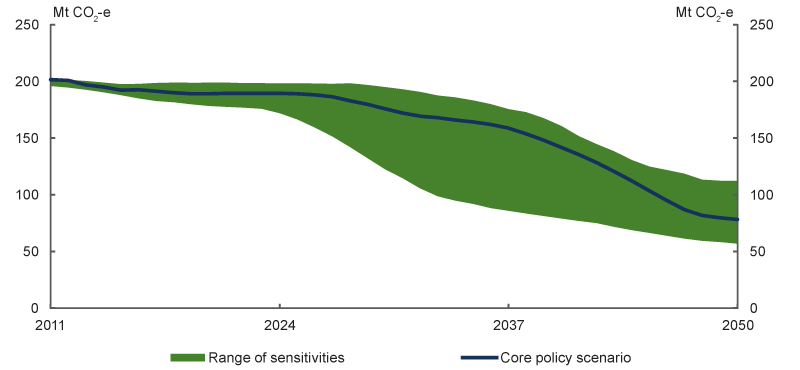Pricing carbon will provide a strong financial incentive to drive innovation in low-emission technologies, creating new activities and jobs that we can't foresee today.
As with all modelling of this nature, Treasury modelling includes assumptions about the future costs of technologies.
There is a great deal of uncertainty around the precise timing of new developments and the future evolution of emerging low-emission technology costs.
The modelling only includes known technologies, not potential new technologies.
It is almost certain that new technology that we don't know about yet will also play a role in making our world cleaner. If this occurs, the costs of climate change action could be significantly lower.
The modelling is robust to a range of assumptions. Sensitivity analysis shows that the emissions from electricity generation will fall significantly under a range of plausible technology and commodity price assumptions.
Pricing carbon will reduce emissions and change costs. The changes in cost will have a significant impact on technological development, so cleaner technology develops faster and becomes commercially viable sooner.
Small increases in the carbon price can lead to significant abatement opportunities.
For example, once the carbon price gets high enough to make carbon capture and storage commercially viable, we could see dramatic reductions in electricity sector emissions over a short period of time.
Electricity emissions under different assumptions
